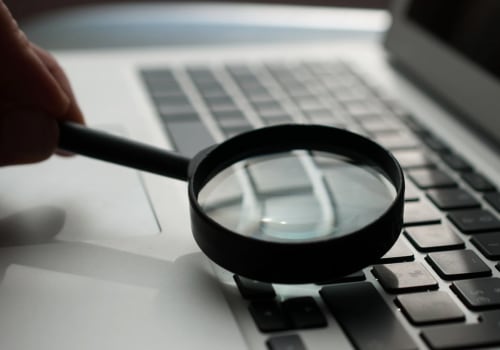Process Auditing is a critical element of any business operations and an important tool for ensuring the accuracy of financial records and compliance with regulations. It is a method of ensuring that processes are being followed correctly and efficiently, and that all necessary steps are being taken to ensure the success of an operation. The best practices for process auditing can help businesses maximize their efficiency and reduce the likelihood of errors or omissions. This article will provide an overview of the best practices for process auditing, with a focus on areas such as compliance, risk management, and internal controls.
It will also discuss the importance of training and education to ensure the proper implementation of these best practices. By following these best practices, businesses can ensure that their operations are running smoothly and efficiently.
Identifying Key Performance Indicators
When it comes to process auditing, identifying key performance indicators (KPIs) is essential. KPIs are measurable values that show the effectiveness and efficiency of a process. By analyzing KPIs, businesses can gain insight into their operations and pinpoint areas for improvement.The first step in assessing process performance is to identify the KPIs most relevant to the process being audited. This will vary from business to business, but some common KPIs include production volume, customer satisfaction, on-time delivery, cost control, and employee turnover rate. Once the KPIs have been identified, it's important to establish baseline measurements for each one. This will provide a point of comparison against which future performance can be measured.
It's also important to track the performance of each KPI over time, as this can help identify any potential problems or areas for improvement. Finally, it's important to make sure that the KPIs are being used to inform decision-making. By regularly assessing performance and using KPIs as a guide, businesses can ensure that their operations are running efficiently and effectively.
Utilizing Technology to Streamline the Process
Technology can be a great asset when it comes to streamlining the process of auditing. Automating processes, utilizing data visualization tools, and using data analytics can all help reduce the time and effort needed to audit processes.Automation is one of the most efficient ways to streamline the process of auditing. Automated systems can be used to track and document key performance metrics, allowing for quick and accurate analysis. Automation also allows for easier access to data, as it can be stored in databases or cloud-based systems. Data visualization tools can also be used to visualize data from audits.
These tools can provide insights into trends and correlations, helping to identify potential risks or areas of improvement. Finally, data analytics can be used to analyze the data collected during an audit. This can help uncover patterns and anomalies that may indicate potential risks or areas of improvement. Data analytics can also be used to measure the effectiveness of audit processes, providing valuable insights into how they are performing.
Creating an Audit Trail
One of the most important aspects of auditing processes is creating an audit trail.An audit trail is a record of all the steps taken in the process, including who was involved, what decisions were made, and any changes that occurred. This information provides transparency and accountability, which are essential for effective process auditing. To create an audit trail, the auditor should begin by gathering all relevant documents and records that document the process, such as emails, invoices, and contracts. This information should include a timeline of events and all relevant details.
The auditor should then analyze this data to identify any potential risks or areas of improvement. It's also important to document any changes that occur during the process. This includes any amendments to the process or any changes in personnel or resources. It's important to note any deviations from the original plan, as well as any decisions or actions taken in response.
Finally, it's essential that the auditor document their findings in a clear and concise manner. This will help ensure that everyone involved in the process understands their roles and responsibilities. It also helps to ensure that any changes or improvements that are made are properly documented and understood.
Understanding the Purpose of Process Auditing
Process auditing is an important part of any business, as it helps to ensure operations are running smoothly and can detect any potential risks. Understanding the purpose of process auditing is essential in order to ensure optimal performance and efficiency.Process auditing involves a review of the systems, procedures, and processes that are used in a business in order to evaluate their effectiveness and compliance with established guidelines. The purpose of process auditing is to identify any issues or problems that may be present and take corrective action if needed. It is also used to ensure that the processes are being implemented correctly and are in accordance with the company's overall objectives. In order to effectively audit processes, it is important to understand how they are being implemented within the organization.
This includes looking at the systems, procedures, and processes that are being used and determining whether they are providing the desired results or not. Additionally, auditors should consider any changes that have been made to the processes since their implementation. When conducting process auditing, auditors should also take into account any external factors that may be affecting the effectiveness of the processes. These external factors could include changes in technology, changes in regulations, or other external influences.
It is important to assess these influences in order to determine their impact on the processes. Process auditing is essential for ensuring that processes are running as efficiently and effectively as possible. By following best practices for process auditing, businesses can ensure that their operations are running smoothly and can detect any potential risks.
Establishing a Feedback Loop
The establishment of a feedback loop is one of the most important aspects of process auditing. This feedback loop allows you to identify any issues or risks that may arise during an audit and take appropriate action.By ensuring that the feedback loop is in place, you can ensure that all processes are running smoothly and efficiently. The first step in establishing a feedback loop is to set up a system to collect data from the audit process. This data should include information on how the process is running, what improvements need to be made, and any potential risks that could arise. Once the data is collected, it should be analyzed to identify any areas that require improvement or further examination. The next step is to put in place a system of communication between the auditors and the stakeholders involved in the process. This will allow for any issues or potential risks to be addressed quickly and efficiently.
Communication should also be used to provide feedback on the audit process itself, such as how it can be improved or streamlined. Finally, the feedback loop should be used to provide ongoing monitoring of the process. This will ensure that any changes or improvements are implemented in a timely manner and that the process remains efficient. It will also help to ensure that any potential risks are identified and addressed quickly. By establishing a feedback loop, businesses can ensure that their processes are running smoothly and efficiently and that any potential risks are identified and addressed quickly. This will help to improve overall performance and efficiency while also reducing the risk of errors or problems occurring during the audit process.
Developing an Audit Plan
When it comes to process auditing, it is essential to have a plan in place.A well-developed audit plan will ensure that the audit is conducted effectively and efficiently, and that all potential risks are identified and addressed. Here are the best practices for developing an effective audit plan:Identify the scope of the audit:The scope of the audit should be clearly defined and should include all processes, procedures, and activities that need to be audited. This will ensure that all areas of the business are covered and that no important elements are overlooked.
Set objectives:
It is important to set clear objectives for the audit so that the audit team knows what they are trying to achieve. The objectives should be specific and measurable, and should be linked to the overall goals of the business.Develop an audit schedule:
The audit schedule should include a timeline for each step of the process.It should also include deadlines for completing each step of the audit, as well as a schedule for reviewing and approving the results.
Establish a communication plan:
A communication plan should be established to ensure that all stakeholders are informed of the progress of the audit. This will help ensure that everyone is aware of any changes or updates to the audit.Analyze the results:
Once the audit is complete, it is important to analyze the results. This will provide valuable insight into any potential risks or areas for improvement, and can help identify any potential issues that need to be addressed.Creating Audit Protocols
Creating audit protocols is an important part of the process auditing process. It involves setting up guidelines for auditors to follow, so that they can ensure accuracy and consistency in their reviews.There are several key components to consider when creating an audit protocol:Defining Scope and Objectives:The first step in creating an audit protocol is to define the scope and objectives of the audit. This should include a clear definition of what is being audited, as well as any specific goals or objectives that must be met during the process. This will help ensure that the audit is conducted correctly and accurately.
Establishing Audit Criteria:
Once the scope and objectives are established, the next step is to establish criteria for the audit. This includes defining what types of evidence will be collected, as well as how it will be evaluated.This helps to ensure that the auditor has all of the necessary information to conduct the audit in an accurate and timely manner.
Developing Checklists:
Checklists are a valuable tool for auditors, as they provide a comprehensive list of items to be evaluated and verified during the audit process. Checklists should include both quantitative and qualitative criteria, as well as any other relevant information that may be relevant to the audit. This helps to ensure that all of the necessary data is collected during the audit process.Conducting Mock Audits:
Mock audits are a great way to test out an audit protocol before it is put into practice. This helps to ensure that all elements of the audit protocol are functioning properly and that any potential issues are identified and addressed prior to the real-world audit.Monitoring Performance:
Finally, once the audit protocol is in place, it is important to monitor its performance on an ongoing basis.This helps to ensure that any changes or improvements made over time are being implemented correctly and consistently. Process auditing is an important part of any business operation. By understanding the purpose of process auditing, identifying key performance indicators, developing an audit plan, creating audit protocols, utilizing technology to streamline the process, establishing a feedback loop, and creating an audit trail, you can ensure optimal performance and efficiency. With the right tools and techniques, you can create a successful audit process that keeps your business running smoothly.







